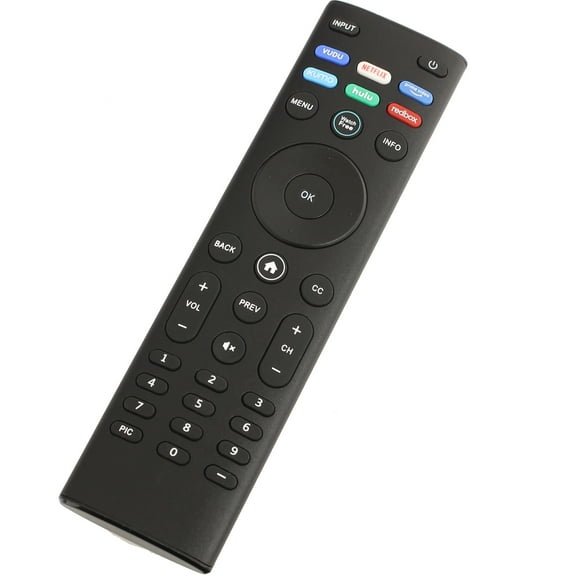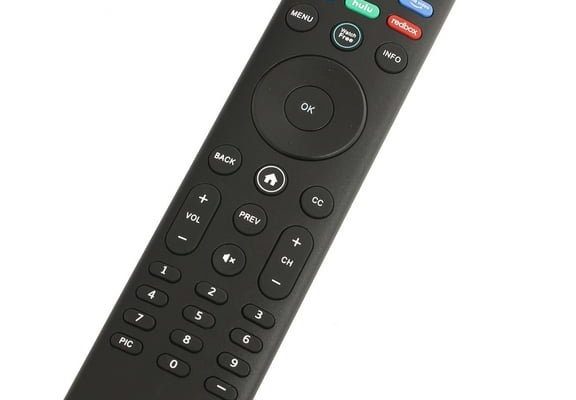
Let’s chat about whether a Vizio TV remote can take control of those streaming devices, so you’re not stuck wondering which remote you lost in the couch cushions (again). I’m going to break it all down, from how these remotes actually “talk” to your gadgets, to what works, what doesn’t, and what to do if things aren’t syncing. Think of it like explaining car keys to someone who’s only ever ridden a bike—and yes, we’ll cover all the little bumps in the road.
How Vizio TV Remotes Communicate With Devices
Most people don’t think too hard about how their TV remote works—until it stops working, or doesn’t do what they want. Here’s the thing: Vizio TV remotes use two main ways to send signals. The classic method is *infrared* (IR), which is a fancy way of saying it shoots invisible light signals to whatever you aim it at. Line of sight matters here—picture a flashlight beaming only where you point it.
But newer Vizio smart TVs can also use something called *HDMI-CEC* (Consumer Electronics Control). This is tech-speak for a feature in your TV and streaming stick that allows one remote (like your Vizio’s) to control other devices—if you have the right cables and everything’s set up correctly. Imagine all your gadgets speaking the same secret language through the HDMI cable. It’s pretty neat, but there are a few catches, which I’ll walk you through soon.
Here’s a fun example: My friend tried to turn off her Fire TV Stick with her Vizio remote, but nothing happened. Turns out, she didn’t have CEC enabled *or* a compatible cable, so her remote was basically shouting into a void. So yes, sometimes you need to tweak things before the magic happens.
What Streaming Devices Can Vizio TV Remotes Control?
Let me explain: *Not all streaming devices are created equal* when it comes to remote compatibility. But if your streaming gadget is plugged into the TV’s HDMI port and both devices support HDMI-CEC, things get interesting. In theory, you can use your Vizio TV remote to do basic navigation—think “up, down, left, right, select, and back.”
- Roku Streaming Sticks: Many models support HDMI-CEC. You may need to enable CEC within your Vizio TV’s settings and your Roku’s menus. Some functions work, but don’t expect advanced controls like launching channels.
- Amazon Fire TV Stick: Also plays nicely with HDMI-CEC on most Vizio TVs. Again, you’ll get navigation and playback, but might need the Fire remote for features like voice search.
- Apple TV: CEC support is there too, so you can use your Vizio TV remote’s arrow keys and select button. But special controls (think Siri or home button) need the Apple TV remote.
It kind of feels like using a universal screwdriver—you get the basics, but for those weird specialty screws, you need the tool that came in the box.
How to Set Up Your Vizio Remote for Streaming Devices
Here’s where a little patience pays off. First, make sure you have an HDMI cable that supports CEC. Most new cables are fine, but older ones can be picky—think of them like those moody chargers that only work at a certain angle.
Next, open your Vizio TV’s settings:
- Go to “System” or “Settings” from your TV’s menu.
- Look for “CEC” (sometimes called “HDMI Control” or “Vizio CEC”).
- Make sure it’s turned on.
Now, check your streaming device’s settings for anything labeled “CEC” or “Control other devices.” Switch that on, too. With both talking the same lingo, your Vizio remote should now control the basics on your streaming stick. If you’re still stuck, unplug everything and plug it back in after a minute—sometimes a simple reset is all you need. I know it sounds suspiciously like tech support, but it works more often than not!
Limitations and What Might Not Work
Alright, let’s keep it real: Using a Vizio TV remote for all streaming duties sounds awesome…until you hit a wall. HDMI-CEC isn’t perfect. It’s like trying to order a fancy coffee in a different country—you’ll get something coffee-ish, but maybe not exactly what you wanted.
Some common hiccups:
- Limited Buttons: Basic navigation works, but special features (like launching Netflix directly or controlling volume on external soundbars) may not.
- Device Differences: Some devices call HDMI-CEC by different names—Roku uses “1-Touch Play,” Fire TV calls it “HDMI Control,” and so on. It’s confusing, and not every device’s implementation is equally reliable.
- Sync Issues: Sometimes, devices get mixed up or forget who’s in charge. A quick reset or re-pair (unplugging and re-plugging devices, or even rebooting your TV) often fixes this, but it’s annoying.
Honestly, for those features where you need voice search, app shortcuts, or pairing Bluetooth headsets, you’ll still need your original streaming remote.
Comparing Vizio Remotes vs. Universal Remotes
You might be wondering, “Should I just get a universal remote and avoid the hassle?” Let me break it down. Vizio TV remotes are designed first and foremost for Vizio TVs. They can do *some* work with HDMI-CEC, but universal remotes (like Logitech Harmony or even some off-brand ones from the drugstore) are built to juggle multiple devices from the start.
Universal remotes often come with easy pairing codes for hundreds of devices and may offer programmable buttons—like mapping “Netflix” to a single press. They’re the Swiss Army knives of remotes. But they also need setup, batteries, and sometimes a few attempts to sync everything (not to mention learning your family’s remote habits all over again).
*If* you’re only using a Vizio TV and a single streaming stick, your original remote plus HDMI-CEC could be enough. But if you’ve got a soundbar, Blu-ray player, and three different streaming gadgets, it might be worth the switch.
Troubleshooting Common Problems With Vizio TV Remotes
No blog about remotes would be complete without a little troubleshooting checklist. Here’s what to try if your Vizio TV remote refuses to boss your streaming device around:
- Check Your Batteries: Dead or weak batteries can cause everything from delayed responses to total silence. Swap them out—it’s quick and often the solution.
- Re-pair Devices: Sometimes, you need to reset the handshake between your TV and streaming stick. Unplug both, wait a little, and plug them back in. It’s old-school but surprisingly effective.
- Check CEC/HDMI Settings: Make sure everything is enabled on both the TV and streaming device. Sometimes updates reset these settings—quirky, but true.
- Try Another HDMI Port: Not all HDMI ports on older TVs are CEC-compatible. Swap to another port and see if things improve.
If you’re still having trouble, check for firmware updates on your Vizio TV or streaming device. Occasionally, a software tweak is all it takes to make things work again.
Alternate Ways to Control Streaming Devices
If your Vizio TV remote just isn’t cutting it, there are other ways to take charge. Most streaming devices offer their own apps for your smartphone. For example, the Roku and Fire TV apps let you navigate, launch channels, or even use your phone’s keyboard for searching (way easier than clicking one letter at a time with a remote!).
Or, if you’re into smart homes, you can link devices to Alexa or Google Assistant for voice control. “Alexa, play Stranger Things on Fire TV”—and just like that, you’re in business. Sometimes, these alternatives feel more futuristic and flexible than wrestling with remotes.
Why It Matters: Simplicity and Control
Let me be honest: wrangling several remotes or troubleshooting tech is not anyone’s idea of a fun Saturday night. Most people—me included—want things to “just work.” Being able to use a single Vizio TV remote for your streaming devices isn’t just about convenience; it’s about keeping things simple and (almost) stress-free.
When your remote and devices are in sync (literally), it’s one less thing to worry about. Fewer remotes mean less time searching and more time watching. And if you do run into trouble, you now know a few tricks to get everything talking again.
When technology cooperates, it feels like magic. When it doesn’t, at least you’ve got the know-how to nudge it back in line.
So, next time you’re stretched out on the couch and someone asks, “Hey, can the Vizio TV remote do this?”—you’ll actually know the answer. And honestly, that’s a pretty great feeling.
